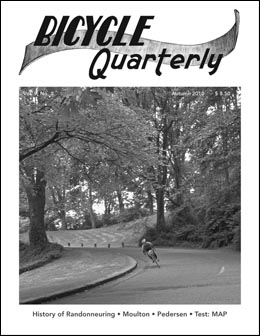

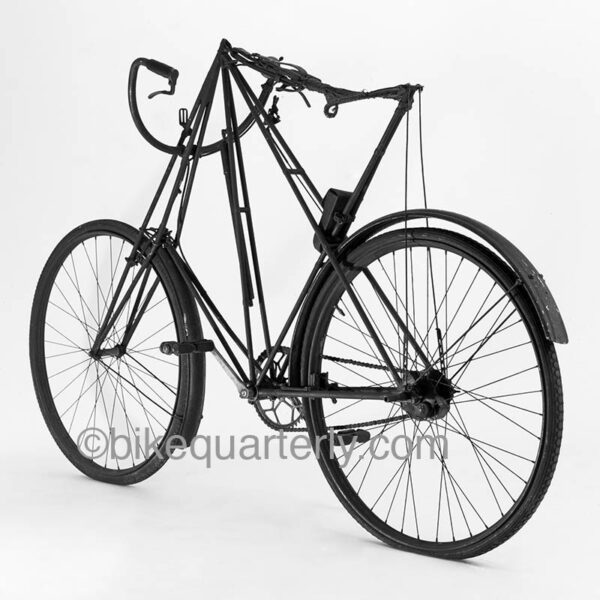
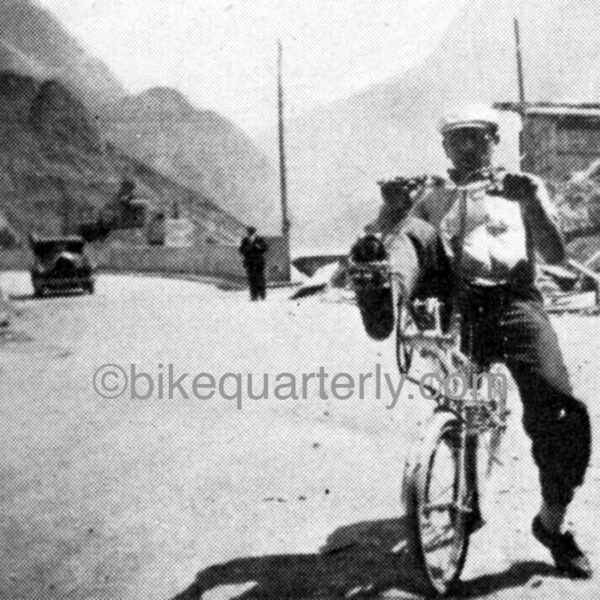
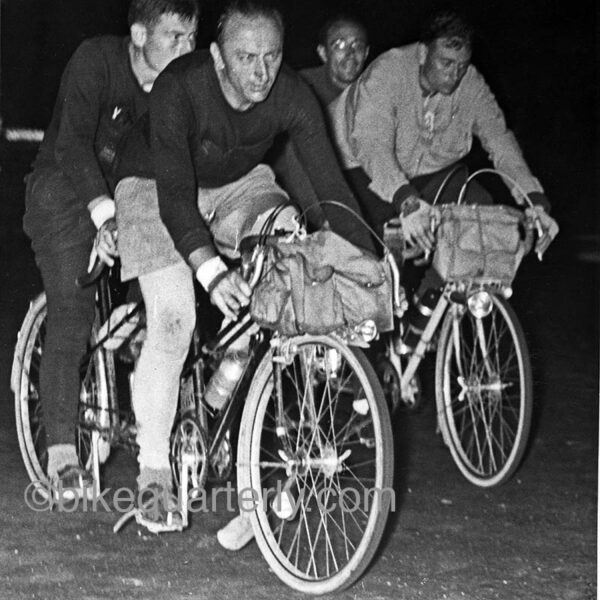
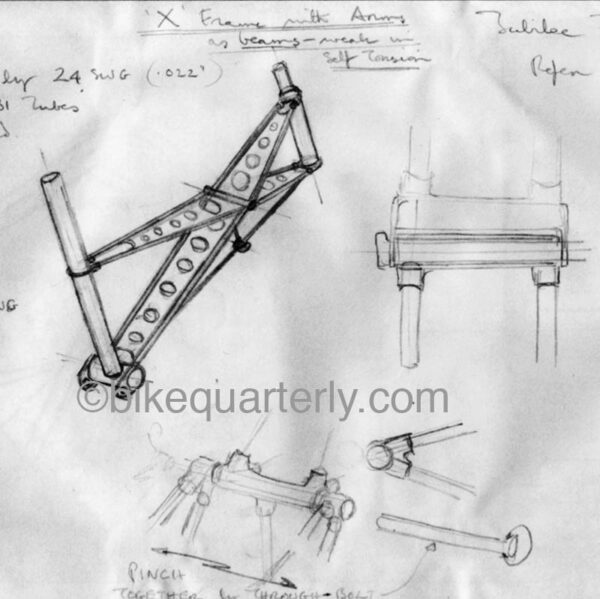
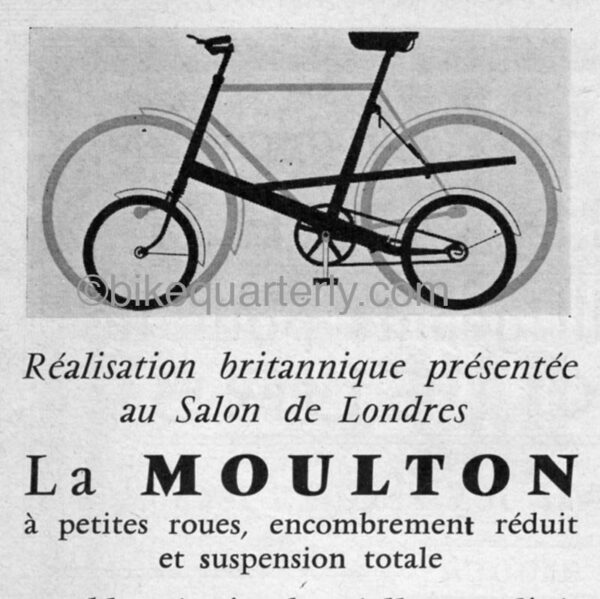
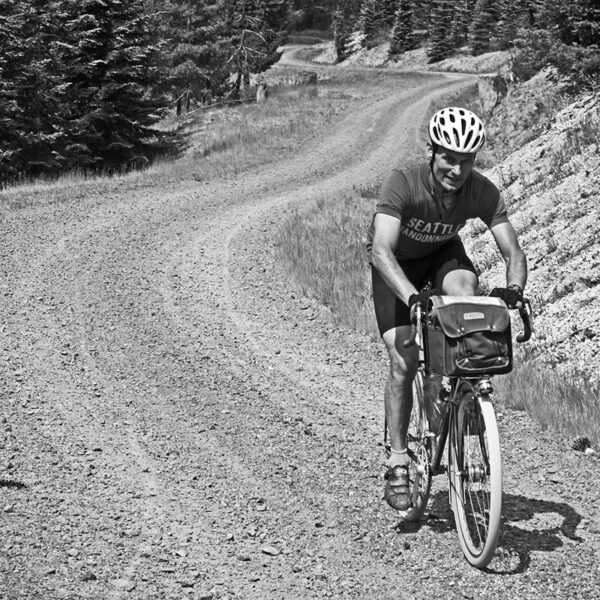
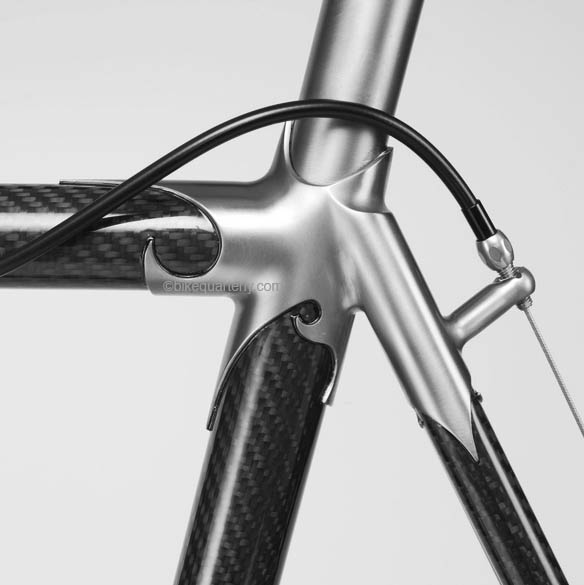


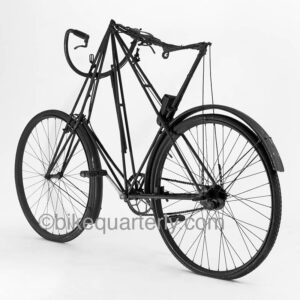
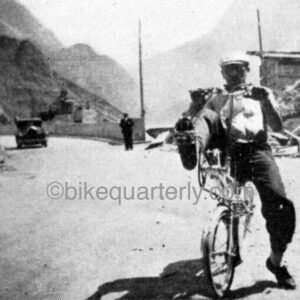

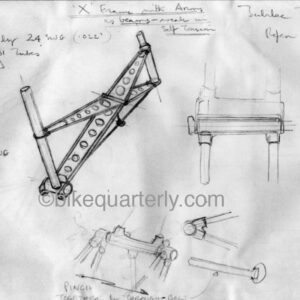
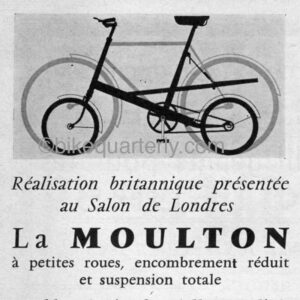
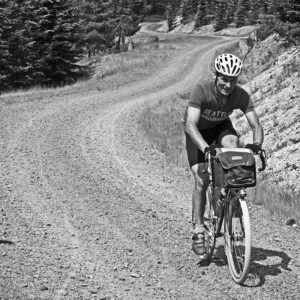
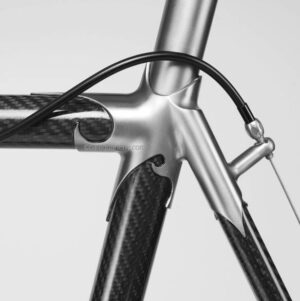
BQ 33 (Autumn 2010)
$9.75
Vol. 9, No. 1
Unconventional Bicycles
Airplanes, cars and trains have advanced tremendously over the last century, yet bicycles have remained almost the same: Two wheels 65 cm in diameter, a diamond frame, chain drive to the rear wheel. There have been numerous attempts to innovate, and we look at a few of them. We test a Moulton New Series, and we ride a modern replica of a Dursley-Pedersen with its unique hammock saddle and multi-tubed frame. We review books on Alex Moulton and Mr. Pedersen, and we examine the promise of unconventional bicycles in events like Paris-Brest-Paris.
Recumbents were popular during the 1930s, and we translated a report from a rider in the 1934 trials of the Touring-Club de France who rode alongside the recumbents and other unconventional machines entered in this event.
Contrasting these unconventional machines, we test a MAP Randonneur Project, which takes everything we know about 650B bikes and synthesizes it into a single bike. How did it perform on a multi-day paved-and-gravel adventure in the Cascades?
We continue our “History of Randonneuring” series with a look at the 1930s. The Diagonals appealed to a spirit of adventure, and so did the first randonneur Paris-Brest-Paris. However, the German occupation with its curfews and travel restrictions encouraged a focus on shorter, faster events, and fostered a more competitive spirit in randonneuring.


